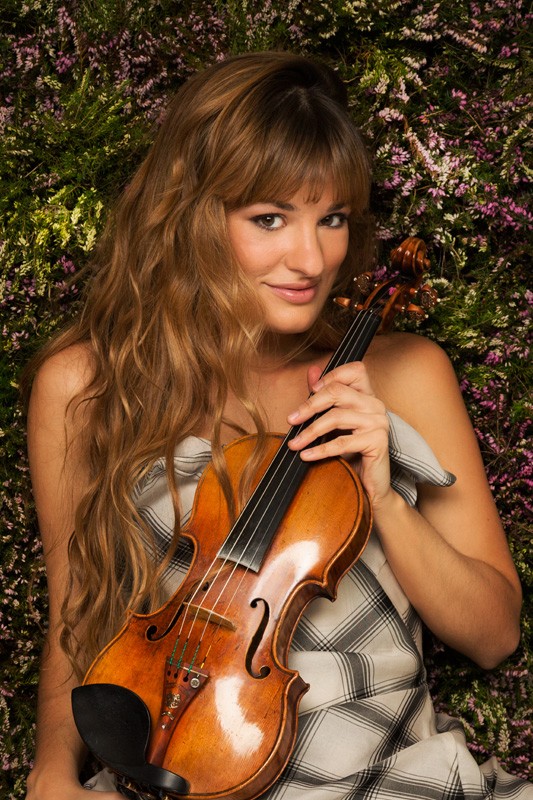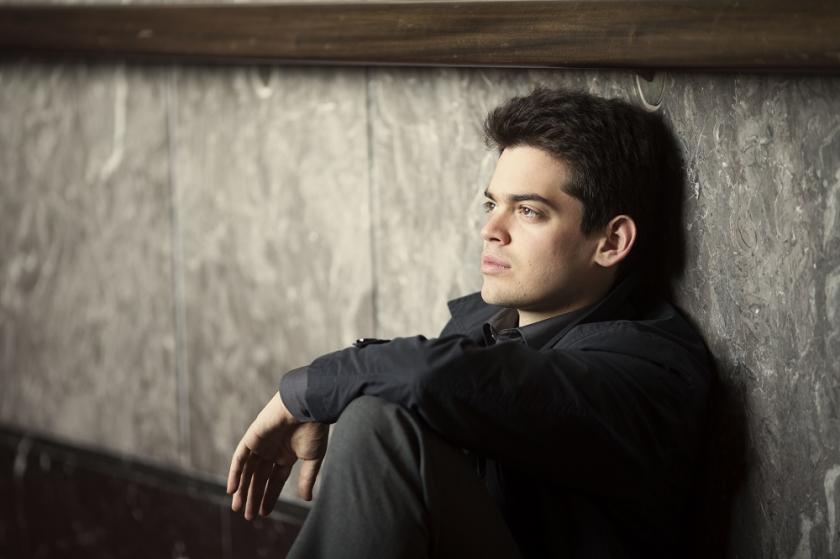With Andris Nelsons now moved to pastures new, the City of Birmingham Symphony Orchestra is without a chief conductor, so for this performance in Saffron Walden (repeating a programme given in Birmingham) it worked with a guest at the podium, the young Israeli Lahav Shani. At only 27, he’s something of a prodigy, winner of the prestigious Bamberg competition and now making his debut appearances with the world’s great orchestras.
Technically, Shani is an accomplished leader, with excellent baton technique and clear ideas about the sound he is looking for. He also has an excellent ear for detail. That tight control can sometimes work against him though, constraining the players and leading to some angular phrasing, especially from the woodwind soloists. But the gains outweigh the losses, and his disciplined and driven readings showed the CBSO in its best light for a varied and often dazzling afternoon of music.
Benedetti's free and lyrical playing came as a breath of fresh air
The concert began with the both the conductor and the orchestra well outside of their comfort zone, in Haydn’s Oxford Symphony (No 92). The string sections were each reduced by a few desks, but this was still big-band Haydn in an unapologetically Romantic vein. No concession was made to period performance practice, not even the natural trumpets and copper timpani that are all but ubiquitous in Classical-era symphonies these days. Strings played with full vibrato, and phrases flowed one into the next.
It was an unfashionable approach, but made convincing by the sheer commitment behind it from Shani and the players. Haydn’s clean textures exposed some shaky ensemble in places, from the strings in the Adagio introduction and woodwinds in the similarly-paced second movement. But a feeling of Classical order was maintained, largely thanks to Shani’s emphatic, regular beat and control over the string phrasing.
After so much regimented order, the free and lyrical playing of Nicola Benedetti (pictured below by Simon Fowler) in Szymanowski's Second Violin Concerto came as a breath of fresh air. Here again, Shani took a firm hand of the tempos, but in conjunction with Benedetti the results felt more natural. The orchestra, well schooled in Szymanowski by Simon Rattle, brought out all the colours and subtle contours of the music without Shani having to coax. Even so, his balancing of the orchestral textures was excellent, complementing Benedetti and without ever seeming overly restrained. The climax of the work was a real treat, with both Benedetti and Shani subtly grading the dynamics and gradually applying harder edges to the textures. For a piece more often presented in hazy Impressionist hues, this dynamic and cleanly contoured version proved a welcome alternative.
 So too with Dvořák’s “New World” Symphony in the second half, which was also given a propulsive and breathless reading that often proved genuinely exhilarating. Strident brass calls in the first movement elegantly punctuated the warm string textures. The first movement coda was particularly impressive, the climax perfectly judged to leave us breathless at the final chord (shades of Nelsons there). The second movement was taken at a daringly slow pace, but for the most part it worked, with Shani maintaining strong control over the long phrases and never letting the tone of the sustained chords sag. Rachel Pankhurst gave an excellent cor anglais solo, although the accompanying textures, especially the auxiliary woodwind lines, were too loud.
So too with Dvořák’s “New World” Symphony in the second half, which was also given a propulsive and breathless reading that often proved genuinely exhilarating. Strident brass calls in the first movement elegantly punctuated the warm string textures. The first movement coda was particularly impressive, the climax perfectly judged to leave us breathless at the final chord (shades of Nelsons there). The second movement was taken at a daringly slow pace, but for the most part it worked, with Shani maintaining strong control over the long phrases and never letting the tone of the sustained chords sag. Rachel Pankhurst gave an excellent cor anglais solo, although the accompanying textures, especially the auxiliary woodwind lines, were too loud.
Few performances fail to deliver a propulsive scherzo and a driving finale, which is exactly what we got here. But in the finale again, the sheer energy and dynamism of Shani’s reading raised the excitement levels by a notch. It was just a shame that he exerted so much control over the woodwind soloists in the quieter interludes, and that the final woodwind chord, as in the second movement accompaniments, was too loud to create the wistful effect the composer was after. Even so, this was a compelling and insightful reading of the symphony. Having just last year heard the Czech Philharmonic under Jiří Bělohlávek performing the Seventh Symphony in this same hall, I find it fair to say that Lahav Shani and the CBSO play this music with an idiomatic flair not far off what you’ll hear from native Dvořák speakers.














Add comment